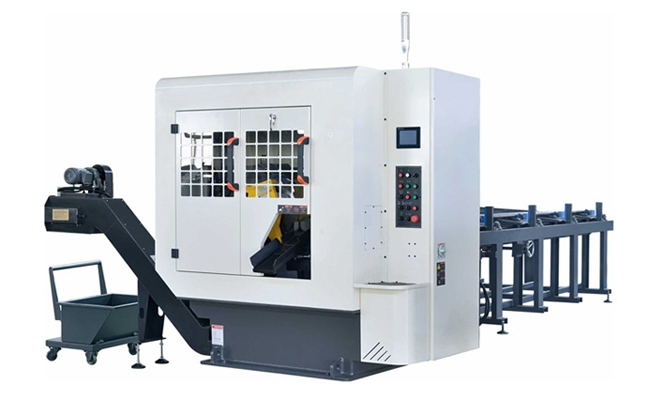TBK-4220 Double Column Band Saw
Cutting Capacity :
Before purchasing a bandsaw, understanding these five key tips will help you choose the right tool for your needs, avoiding wasted budget or inadequate performance.

1. Determine Your Usage and Material Type
Cutting Needs: Identify the primary materials (wood, metal, plastic, etc.) and thickness. Standard bandsaws work for wood, while metal cutting requires low-speed, high-torque models with variable speed.
Precision Requirements: Intricate curves need narrow blades (e.g., 1/4 inch) and a deep throat capacity, while straight cuts benefit from wider blades (e.g., 1 inch) for stability.
2. Compare Key Specifications
Throat Depth: Determines maximum cutting width (e.g., a 14-inch throat allows 14-inch-wide cuts).
Cutting Height (Resaw Capacity): Affects material thickness. Home models typically handle 4-6 inches; industrial models exceed 12 inches.
Motor Power: Home use (<1HP), commercial (1-3HP), industrial (>3HP). Metal cutting demands higher power.
3. Blade Type and Speed Control
Blade Selection: Carbon steel blades for wood; bi-metal or carbide-tipped for metal. Check TPI (teeth per inch)—higher TPI (e.g., 14) for smooth cuts on thin materials, lower TPI (e.g., 3) for fast rough cuts.
Variable Speed: Adjustable speed (e.g., 500-3000 FPM) suits different materials; metal requires slower speeds (100-300 FPM).
4. Stability and Safety Features
Frame Material: Cast iron reduces vibration for precision; steel is lighter but less stable.
Safety Features: Look for emergency stop switches, blade guards, and guide bearings. Models with auto-shutoff are recommended.
5. Brand Support and Upgradability
Reputable Brands: DEWALT (durable), JET (industrial), Rikon (budget-friendly)—choose brands with local service support.
Accessories: Check compatibility with add-ons like work lights, laser guides, or coolant systems (for metal cutting).
Test Before Buying: Check for excessive vibration or unusual noise during operation.
Maintenance Costs: Consider blade replacement prices and lubrication systems (auto-lubrication saves effort).
Match features to your budget—e.g., hobbyists may prefer benchtop models, while professionals should consider floor-standing bandsaws.
Cutting Capacity :
Cutting Capacity :